Red Light Therapy For Women’s Health: Treating Menstrual Pain and Symptoms
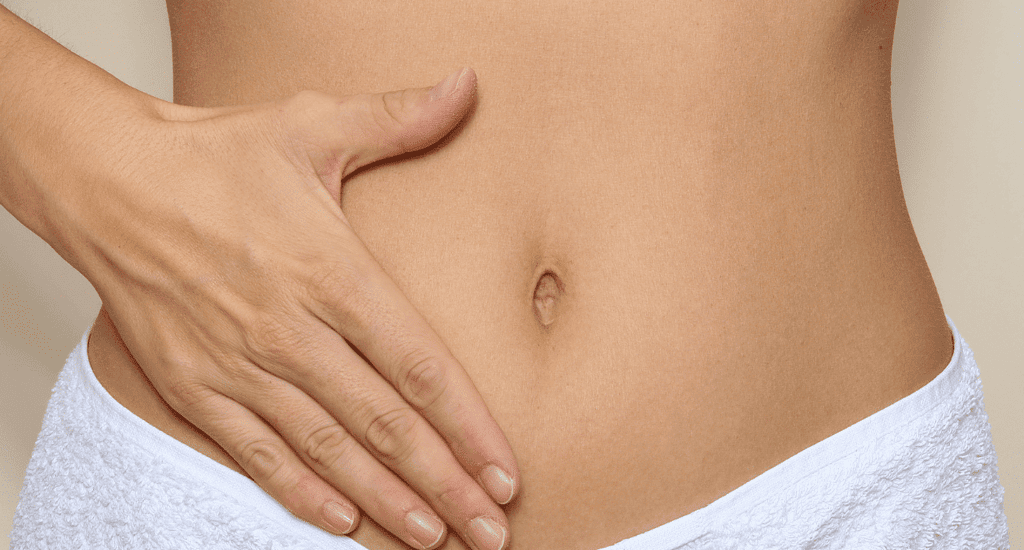
By Leslie K. Hughes
Let's talk about periods.
Periods are an uncomfortable subject for a lot of people, but they don’t have to be. In fact, if we just talked about them more, we’d probably find out that we’re all pretty much in this together.
Menstrual pain is an issue that plagues women across the globe and can be a debilitating issue. A study showed that 84.1% of women experience pain associated with their periods and that 43.1% of women reported feeling that pain every month [1]. Menstrual pain can lead to missing out on school, work, social activities, and more. And for others, this pain can mean more than that and become a source of severe physical symptoms and pain.
When you’re in the middle of menstrual pain, it can be hard to focus on anything else but getting through it—and sometimes that can mean missing out on school, work, social activities, and more. For others, this pain can mean more than that and become a source of severe physical symptoms and pain.
The good news is that there are ways to cope with menstrual pain—and it can often be as simple as getting enough sleep or drinking enough water. So let’s all make a pledge to talk about our periods so we can learn how to help each other manage our cramps!

What are the most common menstrual pain symptoms?
- Throbbing pain in the lower abdomen
- Cramping pain in the lower abdomen
- Dull, long-lasting ache
- Pain in the lower back and thighs
- Nausea
- Loose stool
- Headache
- Dizziness
How is menstrual pain treated?
The Mayo Clinic touches on three treatment options for menstrual cramps [2].
- Pain relievers such as ibuprofen or naproxen sodium (Aleve). It states that these non-steroidal anti-inflammatories should be taken “at regular doses starting the day before you expect your period” and that you should “continue taking the medicine as directed for two to three days, or until your symptoms are gone.”
- Hormonal birth control. Studies show that birth control pills that contain both estrogen and progesterone can help to relieve severe menstrual cramps due to the fact that they block the production of prostaglandin [3].
- Surgery. Some women may find that their cramps are due to endometriosis or fibroids, and the Mayo Clinic shares that surgery may help to fix the problem.
Many women rely on non-steroidal anti-inflammatory drugs, but of course, some prefer to avoid their undesirable side effects. Though the above options may support women in their hunt to end the negative effects of menstrual cramps, they limit women to unnatural options for treatment.
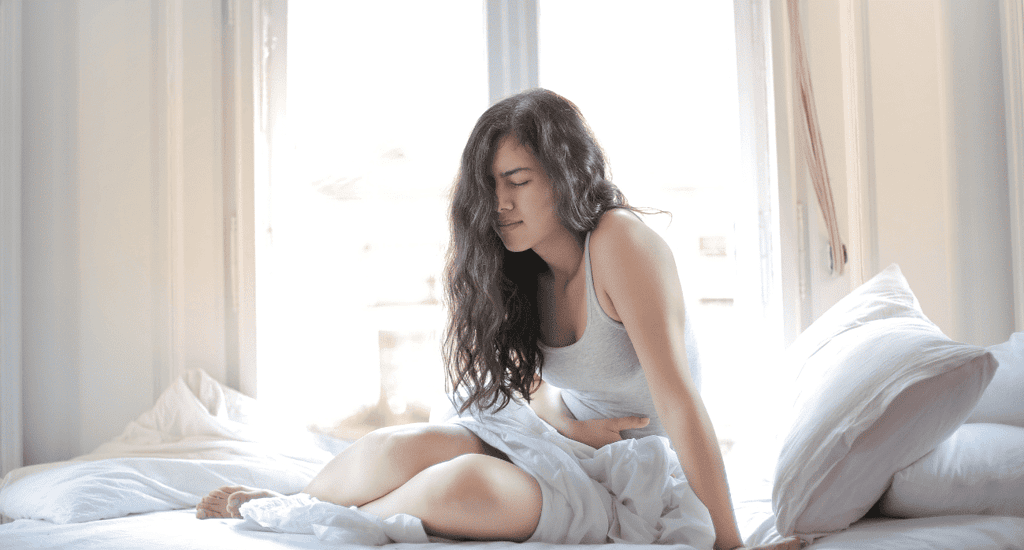
What if you could treat the symptoms of menstrual pain in a more natural, holistic, and comfortable way? Other common natural menstrual pain management methods include [4]:
- Special diets and dietary supplements
- Applying heat with hot water bottles or heating pads, warm baths, or going to the sauna
- Herbal products and herbal teas for medicinal use
- Homeopathic medicines
- Procedures that target pain stimuli such as acupuncture, acupressure, or TENS (transcutaneous electrical nerve stimulation)
There’s an additional option that has proven great promise for helping women with their menstrual cramps. And that option is red light therapy.
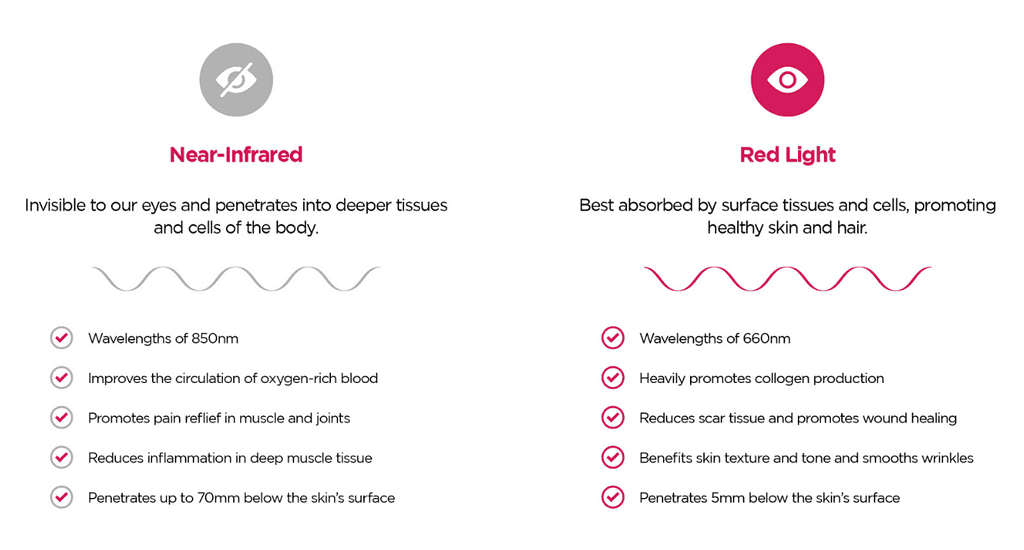
Red light therapy 101
If you’re new to light therapy, it can be a little confusing. There are a lot of different devices and approaches, and some are definitely better than others. Red and infrared light therapies have been used by doctors for decades. In recent years, red and near-infrared light have become available in a simple handheld device that takes advantage of the latest LED technology. The good part is that since red light therapy is non-invasive, it is completely safe to use during menstruation, pregnancy, or any other time.
A red light therapy device delivers wavelengths of natural light directly to your skin and cells. The treatments are very simple, and you can do them right in your home. The style of devices varies, but in most cases, you just have to sit or stand in front of a panel of lights or hold a handheld light device near your body. Sounds much easier than restrictive diets and strenuous exercise, doesn’t it? For many women, they get even better results with red light therapy than with anything else. How?
Red light therapy works by emitting red and infrared wavelengths of light into your body. These wavelengths can penetrate deep into your skin, stimulating the body’s cells to produce more energy and promote healing at the cellular level. The red LED used in this form of therapy creates not only the red light but also the infrared light that is able to penetrate beneath the surface of the skin without causing any harm or damage to the skin. In fact, red light therapy is often referred to as low-level therapy or photobiomodulation and has been used to help with menstrual cramps, also called dysmenorrhea [5].
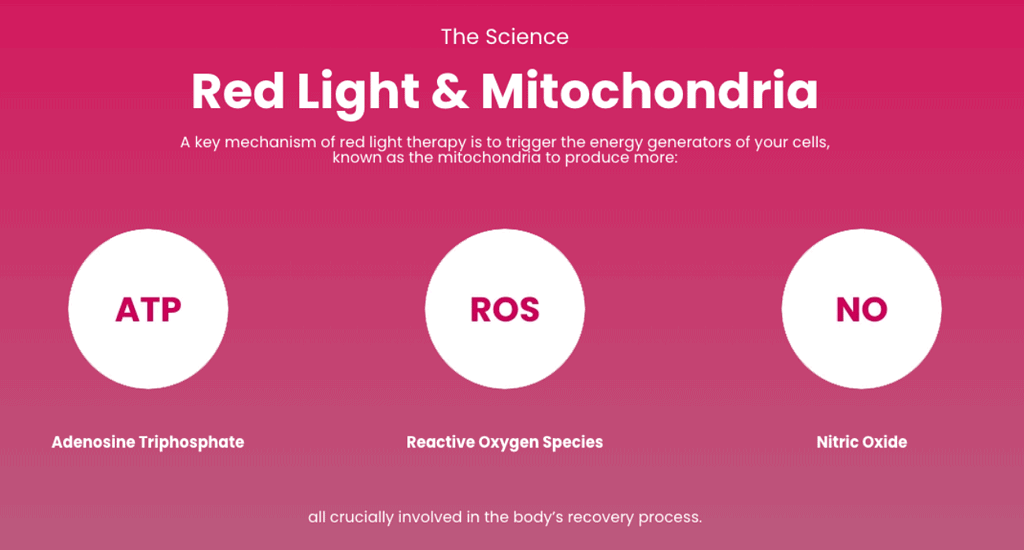
How can red light therapy help with menstrual cramps?
The wavelengths emitted by red light have been shown to be beneficial in treating menstrual cramps. A study determined that red light therapy took the participant’s menstrual pain from a level of 8.3 to a level of 3.8 [5]. This is due to the fact that red light therapy promotes circulation to the area, thus increasing oxygenation and reducing inflammation that causes most of the pain associated with cramps.
Additional studies show that there is a definitive link between blood flow and the pain associated with periods [6]. Consistent blood flow in the body is imperative for major functions of the body but also to keep the uterine blood vessels from constricting. This study showed that on the first day of a woman’s menstrual cycle, she experiences increased resistance to blood flow – a likely signal of constriction of the uterine blood vessels. This constriction can lead to pain, and that pain can be alleviated with the help of red light therapy.
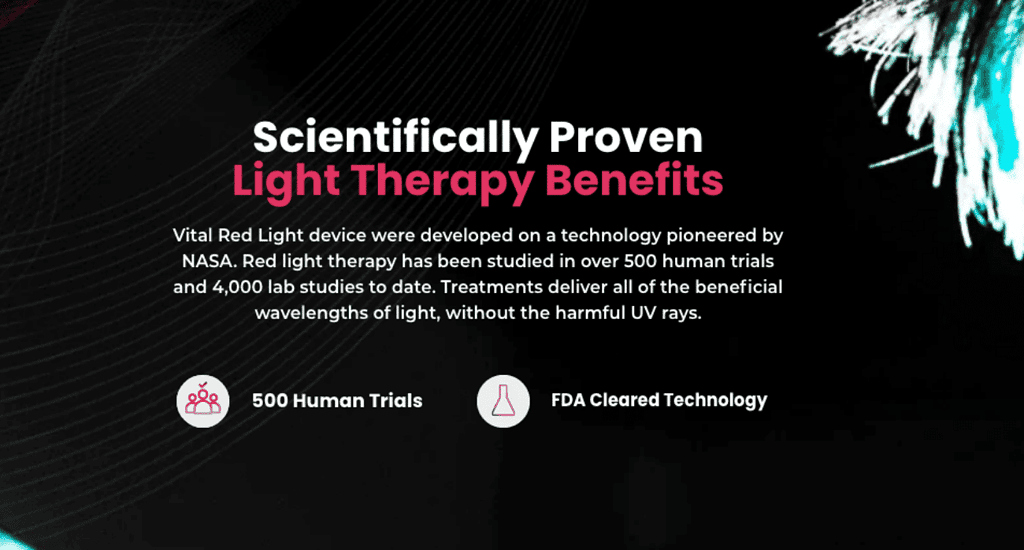
How light therapy works for women’s health
Light therapy works in two ways: Firstly, it improves blood flow and thereby reduces menstrual cramps via photo-activated modulation of smooth muscle tissue. Usually, the light from the light therapy devices is emitted for a fixed amount of time (from 10 to 20 minutes). The light stimulation reaches the uterus and increases the secretion of nitrous oxide (NO). The NO spreads over the smooth muscle in the uterine cells and under continuous light stimulation, produces a phosphate particle called cyclic guanosine monophosphate (cGMP). These particles continuously flow out and relax the smooth muscles so they receive oxygen and nutrition.
Secondly, red light therapy is considered to be effective as an anti-inflammatory treatment, which makes it useful to reduce the common menstrual symptoms of swelling and bloating. A study revealed that a great deal of period pain is a result of inflammation [7]. This discovery was made by monitoring the levels of the C-reactive protein (CRP) in women’s bodies. The study found that the higher the levels of CRP in the participants’ bodies, the more inflammation occurred, along with other menstrual symptoms. Oftentimes, inflammation is treated with medication that only addresses the symptoms of the inflammation rather than the actual root causes.
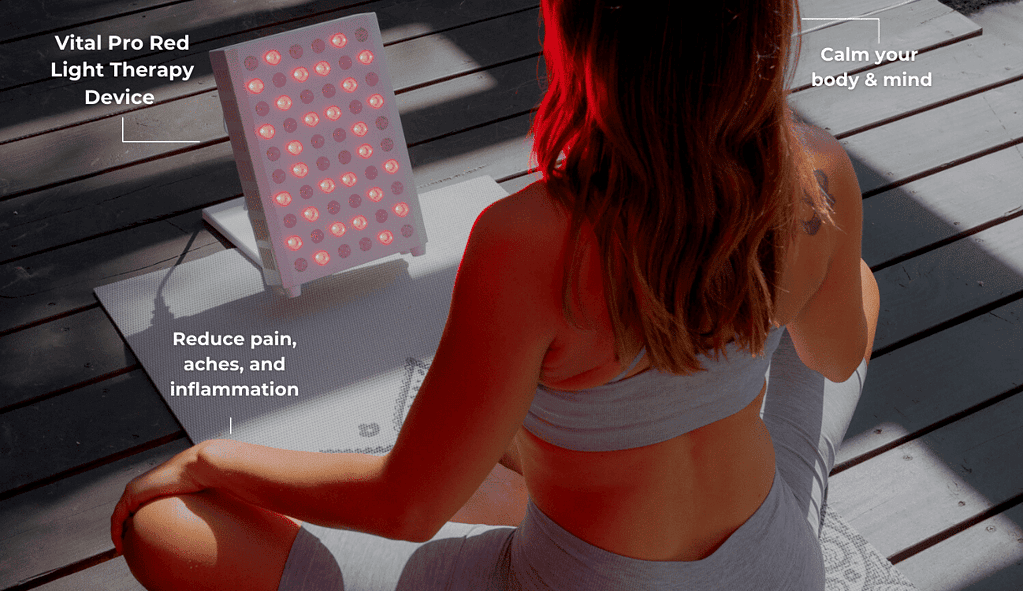
Red Light therapy heals your body from the inside out
Red light therapy provides a solution to not only the symptoms of the inflammation but also the issues that caused it in the first place. That’s because red light therapy increases your body’s energy at a cellular level, called adenosine triphosphate (ATP). That’s thanks to the message that red light therapy sends to your body, telling it to produce more energy, which in turn, helps your body produce anti-inflammatories.
For those women who find themselves experiencing frequent menstrual pain (primary dysmenorrhea), red light therapy may be able to help reduce that regular pain as well. A study showed that, when combined with exercise, red light therapy over a three-month period provided 76.7% of participants with complete relief of primary dysmenorrhea [8].
In addition to treating the symptoms and pain associated with menstruation, this therapy has also been shown to help regulate hormones that may be beneficial in treating hormonal imbalances such as PMS (premenstrual syndrome). Other conditions may benefit from red light therapy such as fibromyalgia, chronic fatigue syndrome, depression, anxiety, endometrioses, and more.
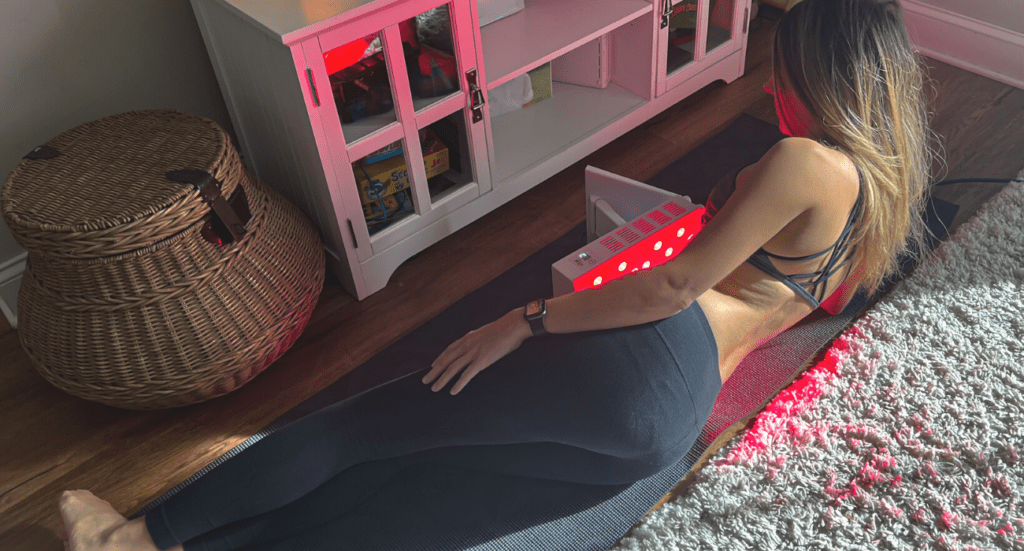
Choosing the right at-home red light therapy device
There are many ways you can bring red and near-infrared light therapy into your home, from small handheld devices to full-body panels. A medical-grade red light therapy device from Vital Red Light features a combination of red and near-infrared wavelengths and has been shown to have beneficial effects on your hormonal health, menstrual pains, and inflammation.
Unlike other devices that only emit light in the visible red spectrum (630nm-700nm), Vital Red Light devices are designed to deliver both red (630-660nm) and near-infrared light (800-880nm). This full range of wavelengths makes Vital Red Light devices highly effective for healing, right at home.
Conclusion
Red light therapy is a powerful and non-invasive way to help women treat menstrual pain and symptoms. It may not be for everyone, but there are thousands of women who are experiencing a significant reduction in PMS symptoms, menstrual pain, and even menopause symptoms thanks to regular red light therapy sessions.
The best part is that you don’t have to book an infrared sauna or set aside half an hour a day to do your red light therapy. With Vital Red Light, you can have your red light therapy session whenever you like, even while doing your morning routine or getting ready.
Vital Red Light provides an accessible, comfortable, and inexpensive way for you to experience the benefits of red light therapy. With one of our devices, you can get a healthy dose of natural light whenever you want and need it.
Ready to get rid of your menstrual pain and symptoms? Explore the Vital Red Light devices today to find the one that’s best for you.
Citations:
[1] Grandi, Giovanni et al. “Prevalence of menstrual pain in young women: what is dysmenorrhea?.” Journal of pain research vol. 5 (2012): 169-74. doi:10.2147/JPR.S30602
https://www.ncbi.nlm.nih.gov/labs/pmc/articles/PMC3392715/
[2] “Menstrual Cramps.” Mayo Clinic, Mayo Foundation for Medical Education and Research, 8 Apr. 2020, https://www.mayoclinic.org/diseases-conditions/menstrual-cramps/symptoms-causes/syc-20374938
[3] From the BetaPlus Center for Reproductive Medicine. “Continuous Compared with Cyclic Oral Contraceptives for the … : Obstetrics & Gynecology.” LWW,
[4] “10 Ways to Relieve Period Cramps – Health Services.” UIS, https://www.uis.edu/healthservices/10-ways-to-relieve-period-cramps/
[5] “Low-Level Light Therapy for Primary Dysmenorrhea – Study Results.” Study Results – ClinicalTrials.gov, https://clinicaltrials.gov/ct2/show/results/NCT02026206?view=results
[6] Altunyurt S;Göl M;Altunyurt S;Sezer O;Demir N; “Primary Dysmenorrhea and Uterine Blood Flow: A Color Doppler Study.” The Journal of Reproductive Medicine, U.S. National Library of Medicine, https://pubmed.ncbi.nlm.nih.gov/15916208/
[7] Chronic Diseases and Use of Contraception … – Liebertpub.com. https://www.liebertpub.com/doi/full/10.1089/jwh.2015.5576
[8] Thabet, Ali A., et al. “Effect of Low Level Laser Therapy and Pelvic Rocking Exercise in the Relief of Primary Dysmenorrhoea.” Bulletin of Faculty of Physical Therapy, http://erepository.cu.edu.eg/index.php/BFPTH/article/view/398



